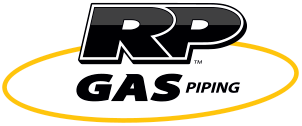When we’re experiencing the colder months of the year, the cozy warmth of a natural gas fireplace is a lovely way to keep your home both warm and inviting. However, while they offer convenience and comfort, it’s important to remember you must take safety precautions when using any appliance.
Safety Tips for Natural Gas Fireplaces During Winter
In this blog post, we’ll explore some key tips for staying safe while enjoying your natural gas fireplace during the coldest months of the year. It doesn’t matter if you use a direct vent system or an unvented heater — following these simple steps will ensure maximum efficiency as well as long-term safety.
So, let’s get started!
1. Inspect the natural gas fireplace before use
Be sure to check the condition of your fireplace before putting it into operation each season. This includes checking for any visible damage, firebox cracks, or other wear and tear signs that could affect its performance.
2. Have a qualified technician install it
If you still need to have a professional technician install your fireplace, now is an ideal time to do so! Professional installation will ensure your system works correctly and safely all winter long.
(Discover some of the natural gas upgrades that can help increase your home’s value next)
3. Inspect the natural gas venting system
It’s essential to check your natural gas venting system for any signs of corrosion, leaks, or blockages. If you notice anything out of the ordinary, have a qualified technician inspect it as soon as possible! This will help ensure toxic gases are not being emitted into your home or that there are any other potential issues to be aware of.
4. Use a carbon monoxide detector
Carbon monoxide is an odorless, colorless gas produced when natural gas is burned. Installing a detector near your fireplace is one way to ensure dangerous carbon monoxide levels aren’t present.
Read about what to do in a natural gas emergency here.
5. Follow the manufacturer’s instructions
When in doubt, refer to your fireplace’s manual for detailed information on how to operate it safely and efficiently during winter months. This will help you be confident you’re using your fireplace correctly and avoiding any potential hazards.
Natural Gas Fireplaces: FAQs
Next, here are some frequently asked questions about fireplaces that can help you maintain a safe and comfortable environment.
What should I do if the natural gas smell is strong in the area of my natural gas fireplace?
If you detect a natural gas smell near your fireplace, leave your home immediately and call your utility company for assistance. Only attempt to light the natural gas fireplace once a professional technician has resolved the issue.
(Here’s why you should call a natural gas company if you suspect a leak)
Can a gas fireplace not have glass?
Yes, some natural gas fireplaces do not have glass over the fire area. While it’s still more common to see natural gas fireplaces with a glas cover, some modern models may not include one, or some have a wire mesh cover instead.
Are natural gas fireplaces expensive to operate?
Natural gas fireplaces are actually cost-effective and energy-efficient. They offer steady warmth while also providing a natural flame that’s beautiful to look at.
By following these simple steps, you can stay safe while enjoying the warmth of a fireplace all winter long! If you have any questions or concerns about using natural gas appliances, please don’t wait to contact us for help or learn more about our natural gas plumbing and natural gas inspection services.
We’re here to help ensure your family is cozy and comfortable this season!
Did you learn a lot about natural gas fireplaces today?
Here are three more posts to read next:
- The Importance Of Annual Gas Line Inspections
- Stop! Here are 5 Reasons Why You Shouldn’t Install Your Own Natural Gas and Propane Lines
- What are the Hidden Dangers of Gas Lines?


